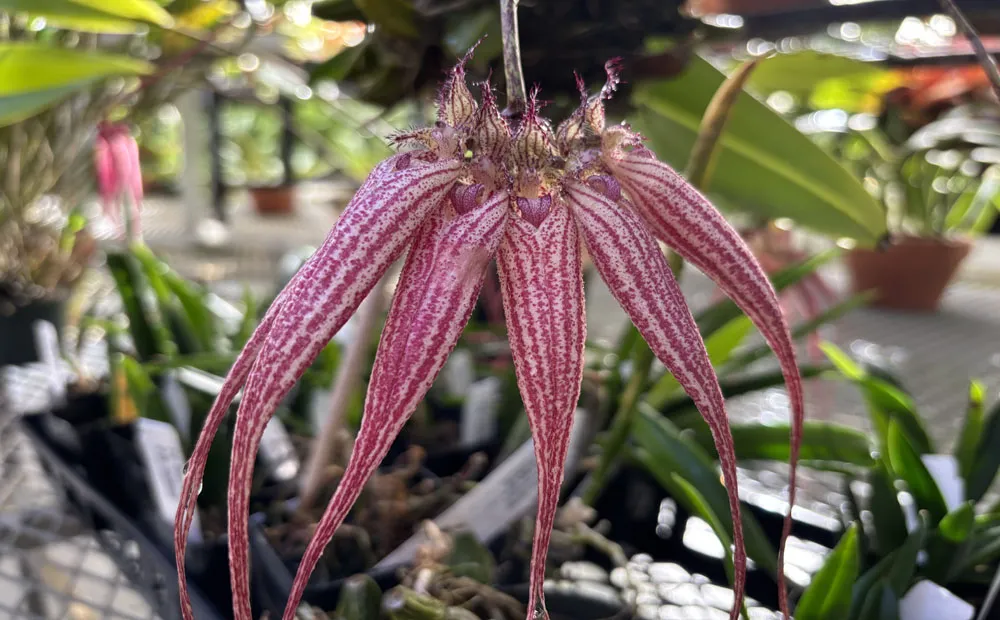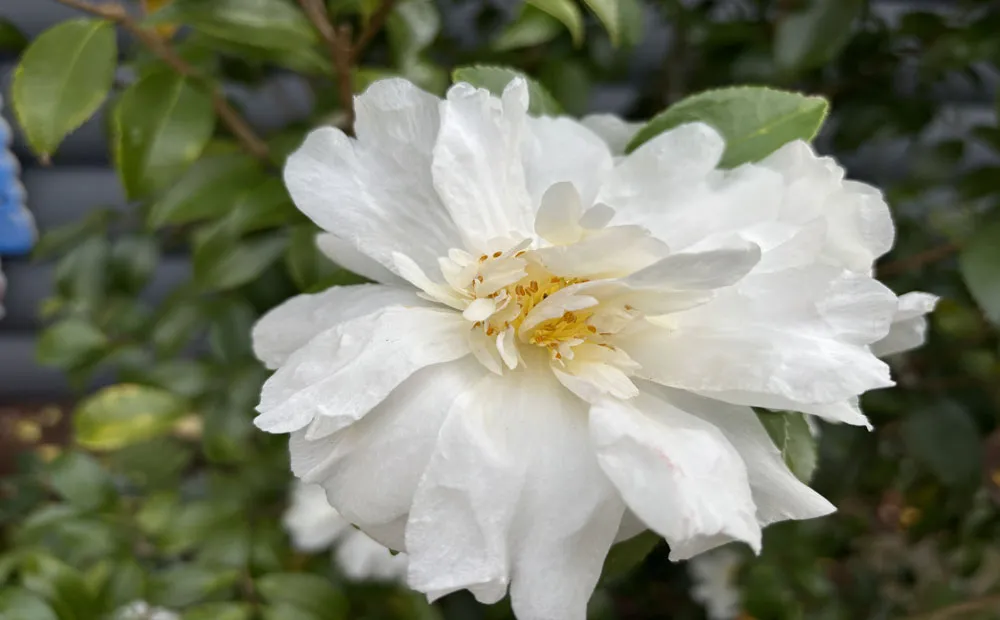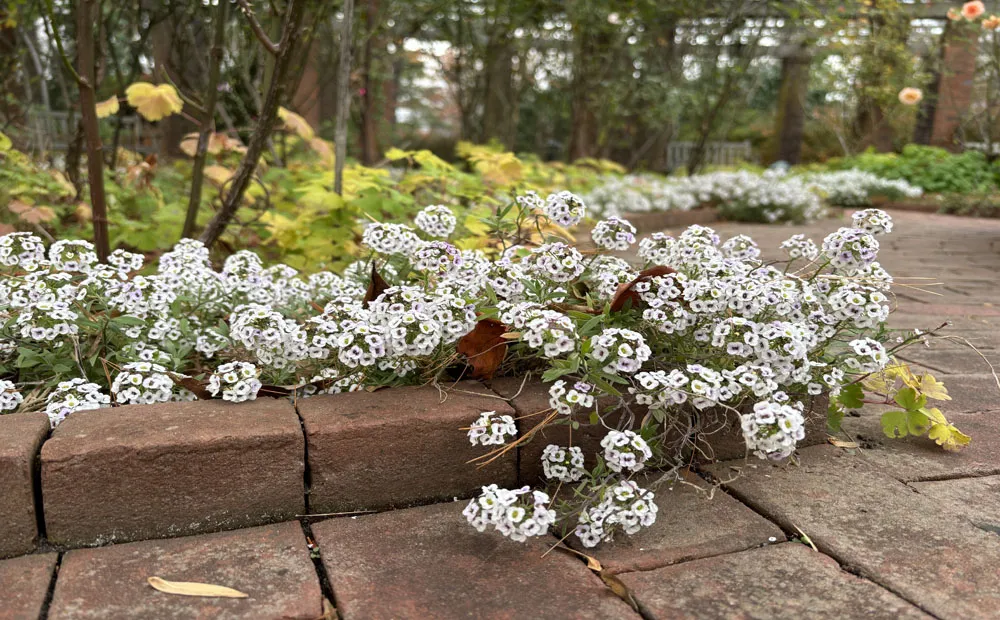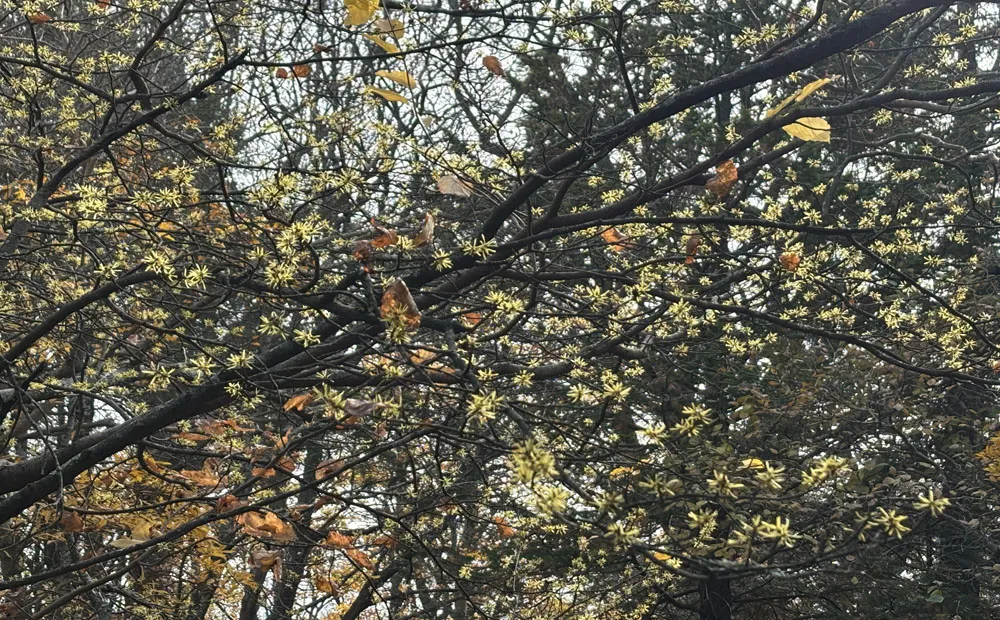What's in Bloom
Set on twenty-five acres adjacent to Rock Creek Park, Hillwood’s gardens feature a diverse and fascinating array of trees, shrubs and herbaceous plants, offering something to see in every season. The working greenhouse also delights with two thousand orchid and tropical plants.
Highlights in the greenhouse:
- There are quite a few orchids coming into bloom. A standout is the pinky-yellow slipper orchid (Phragmipedium Bouley Bay) just in the entrance of the west orchid house. Slipper orchids get their common name from the lip of the flower resembling a shoe. Bouley Bay has an elongated and delicate appearance with a tall dorsal sepal at the top and two long thin petals on either side of the slipper. This orchid is a hybrid of three different species native to Mexico and Central and South America.
- Multiple vanda orchids hanging overhead are in flower. The large blooms of Vanda Pachara Delight 'Pachara' are some of the best true purple flowers in our collection. Vandas are grown without a true pot and can be distinguished by their long, hanging root systems. The plant has a monopodial growth habit meaning that it grows upright from a single stem. The flower spike emerges from the axil of the leaf, referring to the point where the leaf meets the stem.
- One of the collection’s more interesting orchids is blooming now. Bulbophyllum Elizabeth Ann ‘Buckleberry’ produces weeping flower spikes that hold a collection of cascading blooms with pink modeling. Each flower has a tiny, erect hairy sepal at the top and a long, fused sepal hanging down like a tail. Bulbophyllum is the largest genera of orchids and one of the largest of flowering plants overall with over two thousand species.
Plants to note in the gardens:
- Numerous camellias are blooming throughout the grounds and a particularly nice one, Camellia ‘Winter’s Snowman’, can be found near the Dacha. Lovely bright white flowers adorn this upright evergreen shrub. Part of the Ackerman hybrids, this cultivar was developed at the U.S. National Arboretum to have better plant cold hardiness. These hybrids are known to survive down to USDA Zone 6 in sheltered locations. When Marjorie Post was in residence, her gardeners would dig up camellias and overwinter them in the Camellia House.
- A few freezing temperatures cannot slow down the alyssum (Lobularia ‘White Stream’) in the rose garden. This low spreading annual is covered with clusters of small white flowers whose sweet scent can waft through the garden. The petite flowers feed a wide variety of small pollinators and attract beneficial insects that help to combat aphids. The Stream Series was recognized as a Texas Superstar plant for its heat tolerance, a factor that alyssum often struggles with.
- Witch hazel (Hamamelis virginiana) is lighting up the garden at the Four Seasons Overlook. The yellow flowers have crumpled, strap-shaped petals that open as the leaves begin to drop. This small, multi-stemmed, deciduous tree works well on the north side of a home landscape where they can get a bit of shade. Reaching fifteen to twenty feet tall, common witch hazel is native to forest edges and stream banks in the eastern US and Canada.







